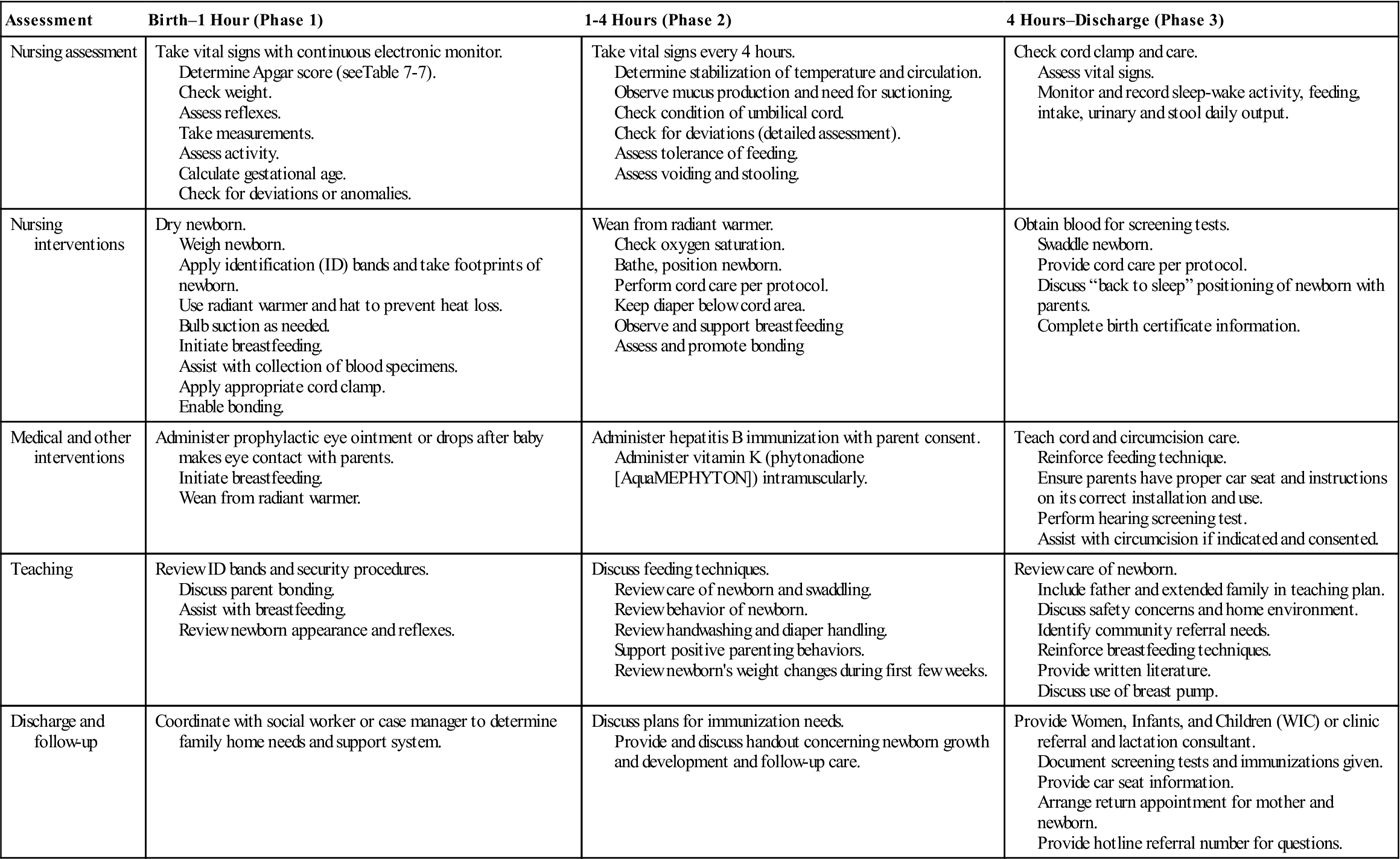
Nursing Care Plan for Normal Newborn Baby
Assessment
General Appearance
- Active and alert
- Good muscle tone
- Skin is pink and smooth
- No rashes or lesions
- Fontanelles are soft and flat
- Caput succedaneum or molding may be present
Vital Signs
- Temperature: 36.5-37.5°C (97.7-99.5°F)
- Heart rate: 120-160 beats per minute
- Respiratory rate: 30-60 breaths per minute
- Blood pressure: 60-80/40-50 mmHg
Neurological
- Moro reflex present
- Grasp reflex present
- Babinski reflex present
- No seizures or tremors
Respiratory
- No respiratory distress
- Clear breath sounds
- No retractions
Cardiovascular
- Heart sounds regular and clear
- No murmurs or gallops
- Capillary refill less than 3 seconds
Gastrointestinal
- Abdomen soft and non-distended
- Bowel sounds present
- Meconium passed within 24 hours of birth
Genitourinary
- Voiding and stooling appropriately
- No signs of infection or malformation
Musculoskeletal
- No fractures or dislocations
- Range of motion within normal limits
Nursing Diagnosis
1. Risk for Ineffective Thermoregulation
- Newborn is exposed to cold environment
- Newborn is unable to generate heat
- Newborn has immature thermoregulatory mechanisms
2. Risk for Impaired Skin Integrity
- Newborn’s skin is thin and fragile
- Newborn is exposed to moisture and friction
- Newborn has immature immune system
3. Risk for Ineffective Breastfeeding
- Mother has difficulty latching on the baby
- Baby has difficulty sucking or swallowing
- Baby is not getting enough milk
4. Risk for Infection
- Newborn is exposed to pathogens
- Newborn has immature immune system
- Newborn has breaks in the skin
5. Risk for Developmental Delay
- Newborn has genetic or environmental factors that may affect development
- Newborn is not receiving adequate nutrition or stimulation
Nursing Interventions
1. Risk for Ineffective Thermoregulation
- Maintain a warm environment for the newborn (36.5-37.5°C or 97.7-99.5°F)
- Use a radiant warmer or incubator if necessary
- Dress the newborn in warm clothing
- Avoid exposing the newborn to cold drafts
- Monitor the newborn’s temperature regularly
2. Risk for Impaired Skin Integrity
- Keep the newborn’s skin clean and dry
- Use gentle cleansers and avoid harsh soaps
- Apply a moisturizer to the newborn’s skin
- Change the newborn’s diaper frequently
- Avoid using tight diapers or clothing
- Protect the newborn from friction
3. Risk for Ineffective Breastfeeding
- Help the mother to latch on the baby correctly
- Position the baby comfortably for breastfeeding
- Encourage the mother to breastfeed frequently (8-12 times per day)
- Monitor the baby’s weight gain to ensure adequate milk intake
- Provide support and education to the mother about breastfeeding
4. Risk for Infection
- Wash your hands before handling the newborn
- Keep the newborn’s environment clean
- Avoid exposing the newborn to sick people
- Administer immunizations as recommended
- Monitor the newborn for signs of infection
5. Risk for Developmental Delay
- Provide the newborn with a stimulating environment
- Encourage the newborn to interact with others
- Play with the newborn and talk to them
- Monitor the newborn’s development and refer for early intervention if necessary
Evaluation
- The newborn maintains a normal body temperature.
- The newborn’s skin is intact and free of rashes or lesions.
- The newborn is breastfeeding effectively and gaining weight appropriately.
- The newborn is free of infection.
- The newborn is developing normally and meeting developmental milestones.
Documentation
- Document the newborn’s assessment findings, nursing interventions, and evaluation.
- Note any changes in the newborn’s condition or any concerns.
- Communicate with the healthcare team about the newborn’s progress.
